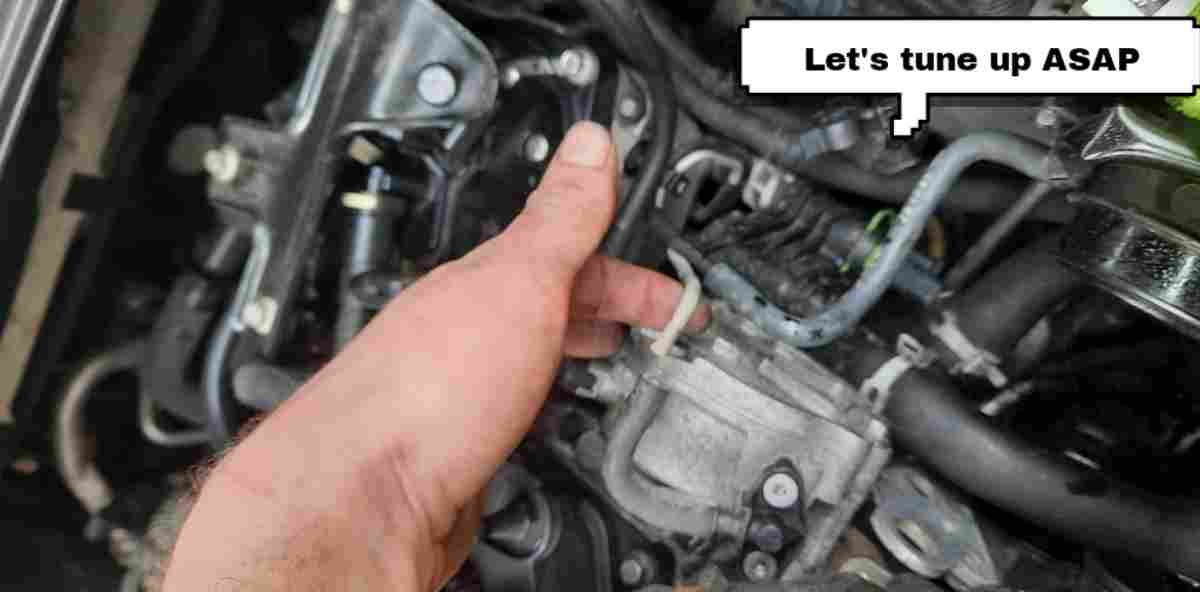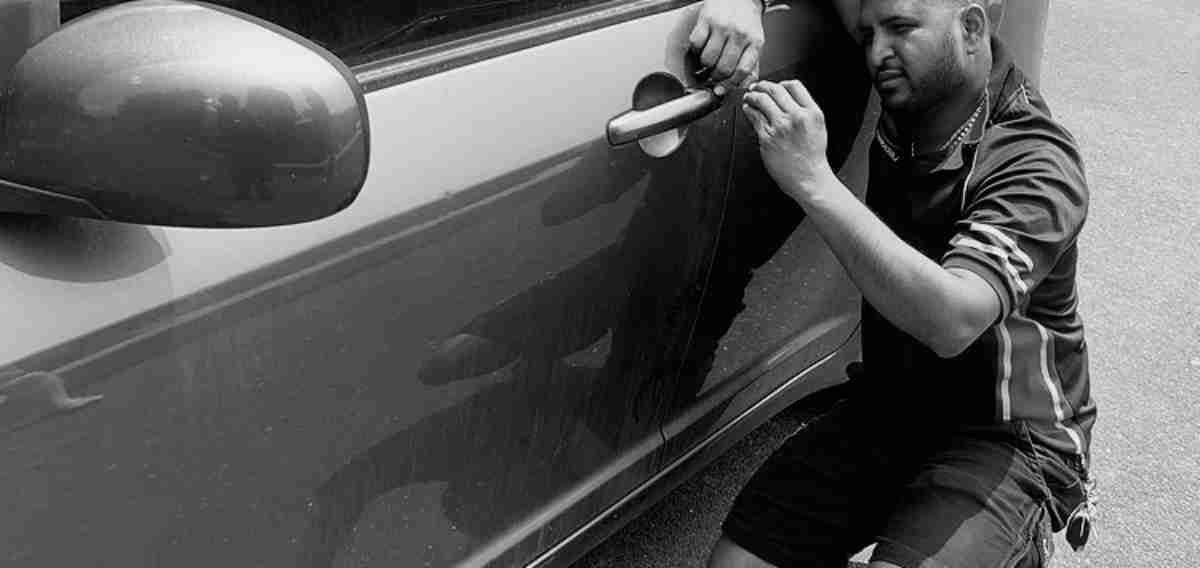What are the signs you need a tune up for your car? A tune up for your car is when it undergoes preventative engine maintenance, including the replacement of spark plugs, rotor, filters, spark plug wires, PVC valve, distributor cap, oil change, and an air filter. For older cars, this may also involve altering the ignition timing.
In certain instances, your car can indicate that it is experiencing problems, while in others; it will not indicate any change. Consequently, regardless of how the car is driven, a tune-up should be performed at least once a year or every 12,000 miles.
Signs you need a Tune up for your car

if your car exhibits these following signs, take it to the technician or mechanic immediately for a tune up.
1. The dashboard lights come on
How often have you noticed one of the dashboard icons lighting up and assumed it wasn’t a severe situation?
You are correct; it doesn’t seem significant at the time. But if you don’t have a car tune-up, things will quickly turn serious. The purpose of the warning lights is to alert you to any issues with your engine.
Check your car’s user manual to find out what the light on your dashboard represents if you notice any lights flashing that you don’t typically see.
2. Hearing strange noises
The sounds that a car emits regularly train a driver’s ear. Even so, it can be rather calming. But when you hear a loud noise that was certainly not there the day before, ease can rapidly give way to terror. Meanwhile, note that noise above 70 dB over a prolonged time may start to damage your hearing. Loud noise above 120 dB can cause immediate harm to your ears.
It will be nearly impossible to figure out what the strange noise implies unless you have car repair training. Even so, the best course of action is to bring your car in for a tune-up so that a well-trained technician can identify the noise’s origin and, ideally, avert a far more serious issue in the future.
3. You begin to stall out
Stalls are inevitable while learning to drive a car with a manual transmission. If you’re an experienced driver or have an automated car and are still having stalling issues, you may be dealing with a more serious issue.
When your engine fails, you will stall, which can be a frightening situation. Your car can stall for various causes, such as:
- A faulty fuel pump
- A dead battery
- Ignition problems
- Improper clutch release in cars with transmissions.
These are all problems that need to be resolved right away. Also, make sure your car emergency kit is well-equipped with all the necessities in case you encounter a situation that requires you to pull over.
4. Ineffective fuel mileage
We prefer to know how far our car can travel on a tank of gas since we are constantly looking for ways to attain the best possible fuel economy. Just consider all the car-related conversations you’ve had where the first thing you’re asked is, “How’s the mileage?”
You’ll have a fair notion of how far you can go on one tank of gas if you’ve been driving your car for a time. The figure ought to always fall within a certain range.
Bring your car in for a full inspection and tune-up if you realize that you aren’t getting as much mileage on a tank of petrol as you typically do. There can be underlying issues causing the decline in effectiveness.
Tips:
Log your mileage each time you fill-up the tank to keep track of it. Your dashboard automatically keeps track of your mileage. Maintain a journal and a pen in the car, log each journey, and then reset the counter. This will make it simple for you to know how far you can travel on a tank of petrol and make it possible for you to see any efficiency decreases.
5. Additional strange noises
If your brakes are silent but other unwanted noises have just arisen, there might be a danger on the horizon.
Common causes include squealing when turning the steering wheel slowly (which may be an indication of low power steering fluid); squealing when the car starts (which may be caused by a worn or loose belt); and noise coming from one or more wheels (which may be the result of an unbalanced tire or a failing CV joint). Whatever the cause, noise is undesirable, especially if it is an unfamiliar sound.
6. Uneven shifts
Automatic transmissions eliminate the guesswork and labor-intensive nature of shifting. They’re seamless, dependable, and effective until they aren’t.
Your transmission needs work if your car hesitates when shifting from reverse to drive or vice versa, if gear changes are abrupt or rough if the car shifts up or down erratically and when you least expect it, or if it struggles to shift into a higher gear as the engine RPMs increase.
Transmission oil, filters, and screens—all of which need routine maintenance—protect and extend the life of the gears that move your car.
7. Your car accelerates slowly
Do you notice that your go has a little less get up? Is your car responding more slowly when the light changes from red to green?
We tend not to notice very small changes until they all add up to a major difference, thus a car that accelerates slowly usually indicates a problem that has developed over time.
While you need to boost your speed, such as when ascending a hill or turning onto a highway, slow acceleration might be problematic. If you observe a drop in acceleration, we advise scheduling a consultation with a technician.
8. Strange vibrations
You can feel the roughness of the road via the steering wheel and car frame when you’re driving over it. It’s definitely not a pleasant feeling. Although it hurts, it is quite normal because your car is responding to the road surface.
Being on a smooth, paved road and having your car begin to vibrate is not entirely typical. This suggests that there is an issue on the inside. It is a clue that you need to visit a technician whether you only experience it at particular speeds, in the steering wheel, or it feels like the entire car could vibrate apart.
9. Your car’s engine is misfiring
A misfire happens when one or more engine cylinders fail to supply your car with power. You’ll experience a lack of power and shaking. Even if one of your cylinders is malfunctioning, you might be able to make it home slowly.
You lose power as more cylinders fail to ignite. This implies that the shaking will worsen and your car won’t move at all.
An engine misfire is a critical issue that has to be addressed right away. A misfired engine might have various causes, such as:
- Defective ignition
- An issue with the fuel system
- A problem with the engine
The best course of action is to schedule a car tune-up right now. If left untreated, a misfiring issue might harm your car and cost you a lot more money to fix.
10. Car sways to one side
Driving while your car is constantly pulling to the left or right is dangerously distracting. As soon as you can, get a tune-up. You’ll need a mechanic to examine potential reasons including misaligned wheels, uneven tire inflation, deterioration of the steering or suspension, or (most dangerously) worn-out brakes.
11. Car is shaking
You might attribute your car’s trembling to an uneven road surface. However, if it vibrates on streets with smooth pavement as well, your car may have an interior issue. The vibrations might only be felt at a certain speed or just in the steering wheel, or they might be so strong that you think the entire automobile could disintegrate. No matter how intense the vibrations are, they are a warning that you need to get a tune-up right away.
12. Car Is heating up
A scenario that every driver dreads is this: Your car is fully prepared for a vacation to the cottage, but as soon as you get going, it overheats. You suddenly have to switch from being on vacation to making an emergency tow call.
To prevent this from occurring, simply schedule routine tune-ups to check for all the issues that can lead to a car overheating such as a broken thermostat, coolant difficulties, a dysfunctional radiator, or a non-working water pump.
How often should you get tune ups for your car?
Approximately once a year, or every 12,000 miles, whichever comes first, is the standard rule of thumb. However, the requirements for various cars vary.
How often a car has to be maintained is greatly influenced by its make and model. A suggested maintenance schedule will have been provided by the engineers who created, assembled, and tested the car. You can find this maintenance schedule online or in your car’s owner’s manual.
Your driving habits and the location of your home may also have an impact on how frequently the car needs maintenance. Your car will require more frequent maintenance to cope with the increased stress and pressure on the car if you drive fast, accelerate quickly, or stop harshly. The same applies to a car traveling over deep sand or snow.
Other variables could affect this time.
1. If you need to move quickly
In terms of the longevity of cars, slow and steady do win the race. What happens if you brake and accelerate quickly? Your car will quickly degrade. Cars require maintenance to help them recover from the daily abuse they endure. If you severely mistreat your car, you want to think about scheduling more frequent maintenance.
Between 40 and 55 mph is the “sweet spot” for driving your car efficiently. Depending on the car you drive, smooth, slow acceleration uses less gasoline (55 miles per hour) and puts less strain on the engine.
This implies:
- A greater number of oil changes. A higher RPM causes your car to burn more oil.
- A greater number of oil filter replacements. You’ll have to change this poor body more regularly if your car is using more oil.
- More regular brake replacements. Your brakes will suffer additional damage if you stop quickly.
- Tire rotations more frequently because your tires are spinning more quickly.
- More frequent tire replacements are necessary because the increased heat from faster speeds causes the rubber in your tires to degrade.
Your car experiences more wear and tear as a result of the high speed’s increased RPMs and the pressure of fast braking, which causes your tires to wear out more quickly and results in increased oil consumption. Because greater force is needed to stop your car, you might also need to change your brakes more frequently.
2. If you live in a dry and dusty area
This includes a few states in the Midwest as well as western states with climates resembling those in Arizona, New Mexico, and parts of California. If you often travel through these regions by car, you should increase the frequency of your inspection.
You should, for instance:
- Make more frequent oil changes. Your engine’s oil helps remove dust and debris.
- More frequently replace your oil filter. This can build up quickly in a sandy environment.
- More often wax and wash your car. Without rain, filth accumulates more quickly, which can harm your paint and decrease fuel efficiency.
- Replace the air filters in your car’s cabin and the engine more frequently. Both of these can clog because they become soiled with dirt and dust.
3. If you live in a cold climate with sleet and snow
Your car is strained in the cold. Although snow, sleet, and salt all have the potential to prematurely corrode the underside of your car. The chemical interactions that salt causes can harm your car. Particularly vulnerable is the exposed metal. Your gasoline lines and brakes could suffer if you don’t take care.
During the winter, if you do reside in a freezing climate, you can anticipate to:
- Wash your car more often to get salt and road filth off of it.
- To keep out the corrosive filth and salt, wax it.
- Replace your wiper blades more frequently
- More frequently replace your battery
- Make more frequent oil changes. When motor oil is cold, it thickens.
What happens if you wait too long to get a tune up?
Parts of your car may experience the following problems if it is not maintained per the manufacturer’s instructions.
a. Tires
A lack of air pressure will result in at least three failures: excessively uneven tread wear, sidewall flexing and heating, and a higher risk of damage when contacting sharp road imperfections. Additionally, it may lead to worse fuel efficiency, handling, and braking. You shouldn’t tinker with your tires.
b. Oil
Adding additional oil without ever replacing the filter will lead to the buildup of sludge, which will obstruct oil passageways, impair the operation of the valve train, generally increase internal friction, and interfere with the crankcase ventilation, among other things. If ignored over a long enough time, this could eventually result in total engine failure. When oil starts seeping into the ground, you can typically tell that you have neglected it.
c. Brakes
Depending on your driving habits and weather exposure, the pistons in the disc brake calipers may seize unevenly, causing reduced pad pressure, subpar braking, and early disc wear. Even though you’ll need your brakes the most during an emergency stop, they may not perform as well. Take no risks if your brakes are defective.
d. Alignment
Wear on the suspension joints and the steering linkage would be considered alignment. The car’s ability to maintain a straight line and its steering reaction during turns may not be at their best. Over time, you can find yourself fighting to keep your automobile moving straight, which is extremely risky.
e. Cooling
The radiator and heater hoses are typically checked by garages, but they often skip over the heater control valve and electric block heater insert, perhaps because they are less noticeable. If either fails, coolant will be lost quickly, and the engine could be destroyed if it isn’t discovered fast away.
f. Timing chain or belt
Replace the timing belt or chain after a certain amount of time. If the “non-interference” valve configuration fails, the engine will at best just stop. If not, a piston will strike an open valve, necessitating extensive engine repair. A failing timing chain happens less frequently than a timing belt.
g. Exposed electrical/ground connections
It may become loose, corroded, or worn as your car ages. Without notice, the car could abruptly stop, or worse, an electrical circuit could become overloaded and burn out delicate electronic components. This most frequently occurs with pricey electronic devices, such as your GPS and radio
h. Broken exhausts and body/cabin holes
Under typical circumstances, exhaust leaks may enter the passenger area and cause the occupants to become intoxicated or suffocate. However, prevention is always a wise choice as most leaks rapidly turn into infractions that might result in noisy tickets.
How much does a tune up cost?
A minor tune-up might cost as little as $40 and go as high as $150. The replacement of the spark plugs and inspection of the spark plug system, including the wires, constitute a small tune-up.
The cost of a more involved tune-up, which includes all of the above maintenance as well as the replacement of the air filter, PVC valve, distributor cap, rotor, and an oil change, ranges from $150 to $800.
The best general defense against automotive issues is always regular maintenance and servicing. Sometimes a problem just appears out of nowhere because you didn’t notice any sign. But after reading this article, you should know the signs you need a tune up for your car.
That said, you should make fewer trips to the mechanic if you take care of your car early and frequently.


